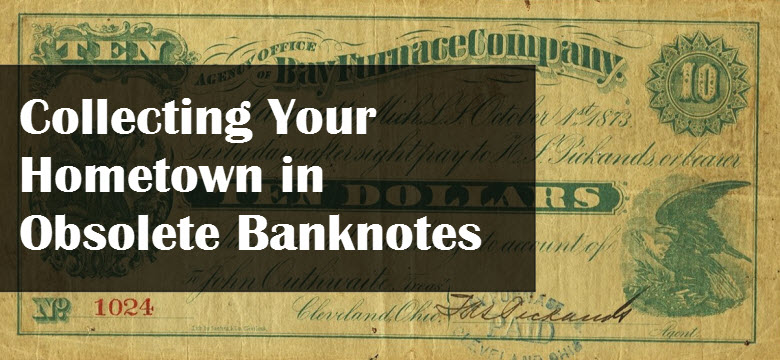Eagle River. Marquette. Jackson. The city names may sound obscure to most people, but to me and vintage currency collectors they are as familiar as apple pie. As a Michigander (a “Yooper” by birth) it’s a delight to find antique currency from the cities and towns I grew up in and visited all my life. Who knew you could collect banknotes from your hometown and home state at auction?
Congress created a new class of currency in 1862 known as United States notes of Legal Tender Notes, but that did not prevent banks across the nation from continuing to create their own currency. Some used beautifully-detailed vignettes depicting dynamic scenes of a Native American spearing a bison on the plains or even Santa Claus (strictly to establish confidence in the bank itself as Bloomberg News tells us). Fun fact: All U.S. currency issued since 1861 remains valid and redeemable at full face value.
Detroit, MI – State Bank of Michigan $2
18__ MI-160 G4a, Lee DET-10-2. Remainder.
PCGS Choice New 63.
These generally obsolete banknotes are a rather attractive window into a world when individual banks produced their own currency. It was perfectly legal for the State Bank of Michigan (a predecessor of the First National Bank of Detroit) to print its own money as of its inception in 1859. The same goes for the tiny bank in Eagle River, Michigan, an unincorporated community and county seat of Keweenaw County in Michigan’s Upper Peninsula.
Eagle River’s The Bay State Mining Company produced beautiful $2 bills in 1867, depicting a mechanic on the left and a horse at the right. Printed in ornate blue-gray hues, the note is a stunning example of the artistry and ingenuity surrounding currency printing in the late 19th century.
Eagle River, MI – Bay State Mining Company $2
Jan. 26, 1867 Lee CMGC-3-10.
PCGS Choice New 63.
One of my favorite examples is a note from Marquette, Michigan, the beautiful city on the southern shore of Lake Superior and my college town. On Oct. 1, 1873 the Bay Furnace Company printed a $10 mining-related scrip note to pay the many migrant workers from Finland, Germany, and England, who flocked to the region to exploit the booming iron ore and copper industries. It just happens a rare example (the first Heritage Auctions has ever sold) is appearing at auction in early May. To be honest, I was rather surprised to see the mining script being offered from the famed collection of Eric P. Newman with an affordable $150-$300 estimate.
Marquette, MI – Bay Furnace Company $10
Oct. 1, 1873 Lee IMGC-2-4.
PCGS Very Fine 20.
The consummate collector and numismatic scholar, Newman began collecting coins and paper money since his childhood. Now at age 104, he has opened his cabinet to collectors who are making new discoveries every day – just like the Marquette mining scrip.
Collectors have a full month to bid on selections from the Eric P. Newman Collection Part 3. Running from April 5 through May 3 the auction offers exemplary Colonial Notes amid its near 1,500 lots and offers a peek inside a collection curated by the premier American numismatic researcher and writer.
As for me, I think I’m going to place a few bids for some obsolete currency from my beloved Yooper roots. It may cost me 30 times its face value but the honor of owning something from Mr. Newman and my hometown is worth the investment.
